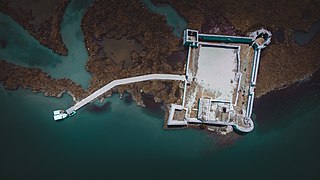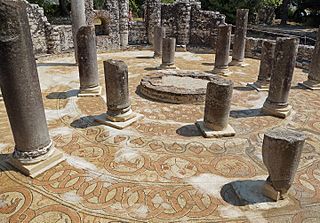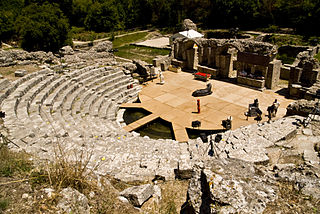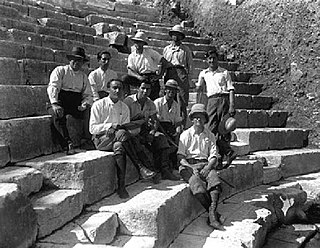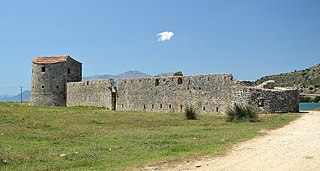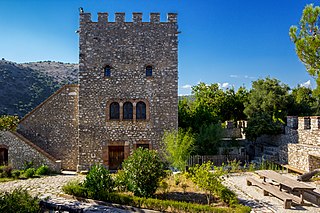6 Sights in Ksamil, Albania (with Map and Images)
Legend
Welcome to your journey through the most beautiful sights in Ksamil, Albania! Whether you want to discover the city's historical treasures or experience its modern highlights, you'll find everything your heart desires here. Be inspired by our selection and plan your unforgettable adventure in Ksamil. Dive into the diversity of this fascinating city and discover everything it has to offer.
Sightseeing Tours in KsamilActivities in Ksamil1. Ali Pasha Castle
Ali Pasha Castle is a castle in Albania. It is named after Ali Pasha of Tepelenë who resided there until 1820. The current fortress was rebuilt in 1819 from its surface with 3 towers. Until 1820 it was the second residence of Ali Pashe Tepelena.
2. Baptistery of Butrint
The baptistery at Butrint, is an archeological site in Vlorë County, Albania and part of the Butrint National Park, is a late antique structure known for its well-preserved mosaic pavement. The centrally planned, circular baptistery is also notable as an ancient Roman monument adapted to the needs of Christianity.
3. Theatre
Butrint theater The theater cave lies inside a square structure, supported by corner reinforced side walls, imitating a well -known theater model in Dodona. The stairs have five compartments, built of large stones, with a length of about 1 meter. The division of ulavas was made by status, where in the first rows the most authoritarian people were sitting near the scene, with special space to relax. , his discovery lasted for about 4 years from Ugolini on the south side of the city's acropolis. It consists of living places, scenes and orchestras. There were 19 lines with stone blocks that served as a seat and 3-4 rows on top. The first 13 stairs are fully preserved. To pass between the lines served 6 pairs of stone stairs were initially decorated with two lion paws. The backdrop in front of the scene consists of a high wall with three marble ornamental arches, where the patterns of the time were placed. The scene square was laid with stone slabs in the Ottoman period. In front of the stairs is located the orchestra site has the shape of an arch is paved with quadratic limestone. The scene is raised higher than the orchestra Square. The scene consists of two environments: Paraskane and backstage. At the background are the narrow corridors that served to enter and move the actors here are some inscriptions on the release of slaves. It is said that many slaves have been released some of whom were women.
4. Archaeological Museum of Butrint
The Archaeological Museum of Butrint was opened in 1938 to highlight the plentiful, and largely Graeco-Roman finds, from the Italian Archaeological Mission of the 1920s and 1930s, led by Luigi Maria Ugolini and was reopened during the 1950s-1960s, in the premises of the Venetian fortress within the acropolis of the ancient city. It contained the plentiful Graeco-Roman archaeological finds from the Italian Archaeological Mission of the period between the two World Wars, that eventually survived the devastation of World War II.
5. Venetian Triangular Castle
The Venetian Triangular Castle is a castle near Butrint. The castle is located by the Channel of Vivari and by the nearby Butrint National Park. In 1572 when the wars between Venice and the Ottomans had been occurring this left Butrint and its acropolis was abandoned. This led to the creation of The Castle which was built in the 15th century by the Venetians. The castle was created to defend the fishing traps which was a very important source of food and income for the nearby settlement. The castle became seized by the Ottomans once in 1655 and 1718 after then being recaptured by the Venetians.
6. Venetian Acropolis Castle
The Venetian Acropolis Castle is a castle on the Butrint Peninsula. The castle is located by the Channel of Vivari and close to the neighboring Venetian Castle Venetian Triangular Castle and the Butrint National Park. In 1386 the Venetians purchased the land around Butrint from the Angevins. The Castle was shortly built after the purchase of the land in the 14th century.The castle was built on the highest point of the Peninsula and was easiest to be defended. In 1572 when the wars between Venetian and the Ottomans had been occurring this left Venetian Acropolis Castle abandoned. This led to the creation of The Venetian Triangular Castle which was built in the 15th century which was across the Channel of Vivari from the now abandoned Venetian Acropolis Castle. The Venetian Triangular Castle was created for a replacement settlement after abandoning the Venetian Acropolis Castle.The castle had fishing traps to protect the very important source of food and income for the new Venetian Triangular Castle settlement. The castle and land came under French rule in 1797. In 1799 Ali Pasha of Tepelena conquered it and it joined the Ottoman Empire until Albanian Independence in 1912. The Castle Today was Restored/Rebuilt by Luigi Maria Ugolini in 1936 and now houses a museum.
Share
Disclaimer Please be aware of your surroundings and do not enter private property. We are not liable for any damages that occur during the tours.
